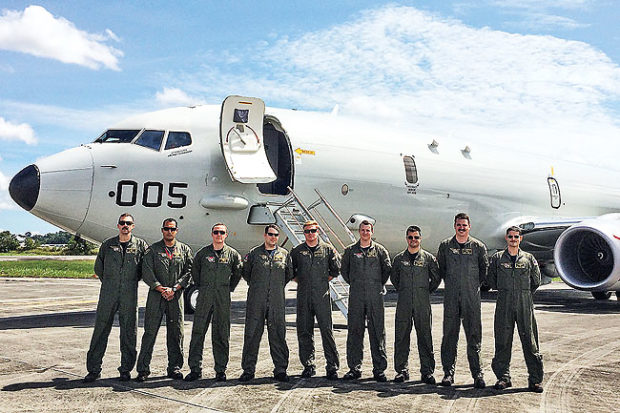An inside look at US Navy’s P-8A Poseidon maritime surveillance aircraft
Local Bruneian media were invited for a short flight on board the US Navy’s Boeing P-8A Poseidon Anti-Submarine Warfare (ASW) aircraft yesterday, at the Royal Brunei Air Force’s Rimba Air Base.
The aircraft was in Brunei for the 23rd Cooperation Afloat Readiness and Training (CARAT) maritime exercises, which began on November 6.
During the CARAT exercises, the aircraft went on a search-and-rescue mission with a role as ‘the eye in the sky’, providing situational awareness for the Brunei and US navies.
It is equipped with an advanced radar system, as well as a high-definition camera that can zoom in on contact vessels, see through darkness and identify heat signatures on maritime missions.
The aircraft also has three types of launchers to propel two types of sonar buoys. A passive sonar buoy is used to listen in on submarines, while the active sonar buoy will emit a sound that will bounce off and back, to provide a range of contact vessels.
Article continues after this advertisementAccording to Lieutenant Robert Nelson, the Mission Commander of the VP-8 Squadron of the US Navy, the aircraft is a maritime patrol and reconnaissance aircraft, which has replaced the aging Boeing P-3.
Article continues after this advertisement“Our mission sets are normally anti-submarine warfare (ASW) and maritime domain awareness (MDA),” he said. The aircraft was built for tracking and listening to submarines, which is where we really shine. Maritime domain awareness is a factor of our long, on-station time, as we are able to travel for long distances with a very capable radar system.”
Local media personnel were brought on an MDA mission during the flight, where the aircraft travelled almost 60 miles out into the ocean in 15 minutes, to assist the Royal Brunei Navy in providing vectors and headings, as well as identifying contacts beyond their radar range.
“We typically carry nine crew members: three pilots (two flying and one ready to take their place) and two naval flight officers (one in communications and the other a tactical coordinator), with four sensor operators, two acoustic operators, and two electronic warfare officers,” said Lieutenant Nelson.
He added that the United States currently has 12 maritime patrol squadrons which are still in the process of phasing out the P-3 aircraft.
“So the P-8 is going to be the future, taking over for the P-3,” he said.
